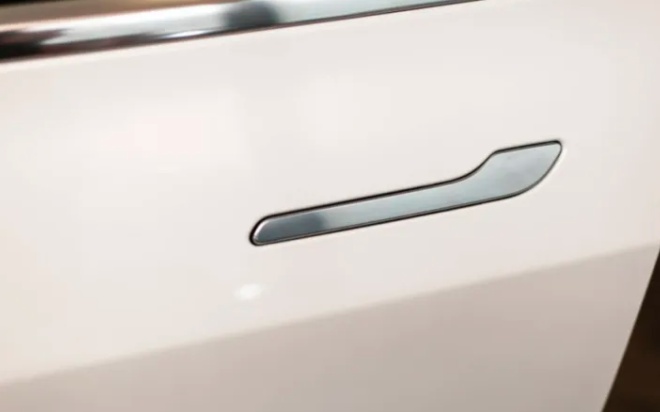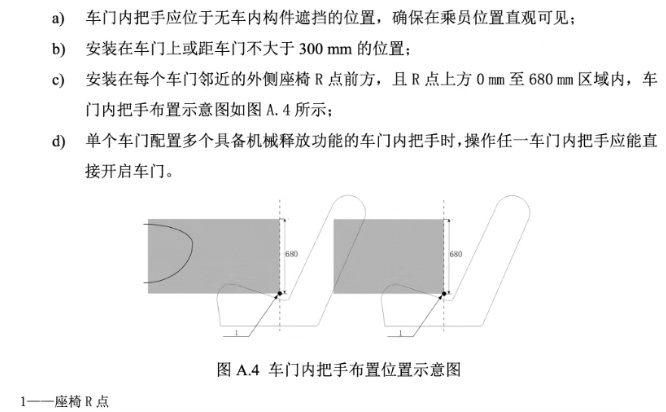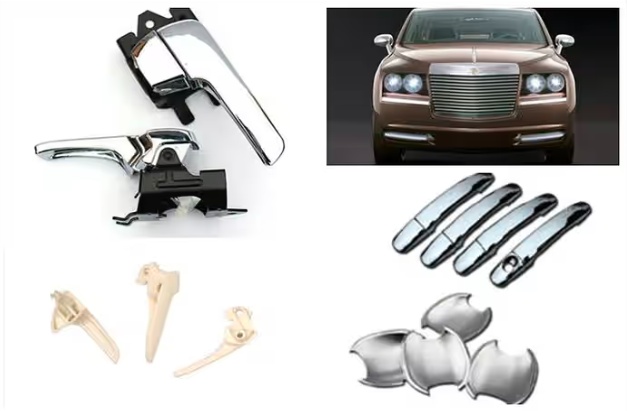Car Hidden Door Handles to Exit! National Action to Rectify, Plastic Door Handles to Bring Big Changes
Specialized VisionOn September 25th, it was reported that,The Equipment Industry Division of the Ministry of Industry and Information Technology has publicly solicited opinions on the mandatory national standard for "Safety Technical Requirements for Automotive Door Handles" and three amendments to mandatory national standards, which explicitly prohibit the use of...The "fully concealed" exterior door handles have sparked widespread attention and discussion. This seemingly ordinary component of the automobile, the door handle, has once again become a focal point in the industry.

Image source: Urban Express
Hidden Door Handles: From Glamour to Ban
In recent years, the new energy vehicle market has been booming, and hidden door handles have become a design element adopted by many car manufacturers. The main reasons for their popularity are twofold: firstly, they can reduce the impact of wind resistance on the car to a certain extent, thereby lowering energy consumption. According to statistics, a single hidden door handle can reduce approximatelyA drag coefficient of 0.003 Cd, with passenger cars typically having four door handles, can reduce the total by approximately 0.012 Cd; secondly, it enhances the appearance, giving a sense of technology and futurism, aligning with the innovative and fashionable positioning pursued by new energy vehicles.
However, while hidden door handles offer these advantages, they also expose several issues. In electric vehicle collision accidents, door handles often fail to pop open, greatly increasing the difficulty of rescue. Rescuers are unable to quickly open the car door, which may delay critical rescue time and pose a serious threat to the safety of the passengers inside. Additionally, in cold regions such as the Northeast, during heavy snow, hidden door handles may become frozen shut, occasionally making it difficult to open the door. Sometimes, additional actions like heating are needed to open the door, causing significant inconvenience to the car owners.
In order to achieve a bit of so-called aesthetics and a slight reduction in wind resistance, consumers have to endure numerous usability issues, which is truly not worth the cost. The new technical requirements clearly state that each car door (excluding the tailgate) must be equipped with an external door handle that has a mechanical release function, ensuring that in the event of an irreversible restraint device deployment or a thermal incident with the power battery while the locking mechanism is engaged, the non-collision side door can be opened without the use of tools via the external door handle. This regulation is undoubtedly a relief, reflecting consumers' long-standing dissatisfaction with hidden door handles.

Source of the image: Draft of the new national standard for public consultation.
Currently, the hidden door handles on the market can generally be divided into rotary type and electrically pop-out push type, and the opening methods designed by different car manufacturers vary. For example, Changan Deep Blue.After unlocking, the S7 opens automatically with a rotating mechanism, while Tesla requires you to press the back, lift the door handle, and then pull to open the door. This diversity in design seems to reflect automotive companies' innovation. However, it actually causes inconvenience to consumers, increasing the difficulty of use. In emergency situations, unfamiliarity with the operation might prevent timely door opening. Such designs that affect usage safety should indeed be eliminated. Automotive companies should reflect, prioritizing actual user experience and safety over creating demand.
Specialized Vision Revealed:Car door handle plastic material
Automotive door handles produced domestically are divided into two types based on material forming processes: alloy die casting and plastic injection molding. Among them, plastic injection molded automotive interior door handles have a wide variety of materials, each with its own characteristics and applicable scenarios.
ABS resin:ABS resin was applied relatively early in the field of interior car door handles. However, due to its poor mechanical properties, ABS resin is now rarely used in door handles. ABS resin for interior car door handles is divided into general-purpose and heat-resistant types. General-purpose ABS has good electroplating performance and can be used in scenarios where electroplating effects are required but mechanical performance requirements are not high. Heat-resistant ABS resin generally has a heat distortion temperature of 90 - 105°C and possesses good rigidity, toughness, and fluidity. It once met the usage requirements for door handles to a certain extent, but with technological advancements, it has gradually been replaced by other materials.
PC:PC is an engineering plastic with excellent mechanical properties, which makes it less prone to deformation and damage when subjected to certain external forces, ensuring the longevity of door handles. However, the electroplating performance of PC is not very good, which imposes certain limitations during use. In designs of door handles that require a high demand for metallic appearance and need to achieve this through electroplating, PC may not meet the requirements. However, there is still potential for application in door handles with lower aesthetic demands or those using other surface treatment methods.
PC/ABS:PC/ABS resin is the fastest-growing and most widely used material for interior car door handles. It is an alloy of PC and ABS, combining the high strength of PC with the easy electroplating properties of ABS. It is mainly divided into two types: electroplating and spraying. Compared to sprayed PC/ABS resin, electroplated PC/ABS resin has a more metallic appearance, making it look more upscale and able to meet consumers' aesthetic requirements for car interiors. Therefore, it is widely used in the mid-to-high-end car door handle market.

PC/ABS door handle, image source: Mattel on plastic modification.
PC/PBT:PC/PBT is a blended material of PC and PBT, which retains the chemical resistance and ease of molding characteristics of crystalline material PBT, while also possessing the toughness and dimensional stability of non-crystalline material PC. However, the application of PC/PBT in interior car door handles is not very common domestically at present. But with the increasing performance requirements of materials in the automotive industry, its potential application value is expected to be further explored.
PA:PA has excellent mechanical properties, but its electroplating performance and water absorption are two major challenges for its application in car interior door handles. In foreign countries, such as Germany, there is a high requirement for tensile strength, and electroplated PA is widely used in German cars. PA used for car interior door handles is generally divided into two types: spray-painted PA and electroplated PA. The composition of electroplated PA is generally PA + 20% mineral, with minerals added to improve its performance to meet the requirements of door handle usage.
This ban will be implemented.Small and medium-sized component enterprises welcome favorable policies.
The recent government crackdown on automobile door handles is good news for small and medium-sized automotive parts companies. Take Alpha Edward Vehicle Components Co., Ltd. as an example. This company supplies door handles to enterprises like Xiaomi. Under the new technical requirements, the market for hidden door handles is gradually shrinking, while the demand for traditional or new door handles that meet safety standards and have mechanical release functions will increase. Small and medium-sized parts companies can leverage their flexibility and innovation capabilities to quickly adjust product strategies, increase investment in the research and production of door handles that meet the new standards, and seize market share.
At the same time, this will also encourage the entire auto parts industry to pay more attention to product quality and safety performance, promoting technological innovation and upgrades within the industry. Companies need to continuously improve in areas such as material selection, design optimization, and production processes to enhance the reliability, durability, and safety of door handles, meeting the needs of the market and consumers.
The adjustment of safety technical requirements for car door handles by the government is a strong safeguard for consumer rights and a guide for the healthy development of the automotive industry. Saying goodbye to hidden door handles not only makes travel safer and more convenient for consumers but also brings new development opportunities for automotive parts companies, promoting the entire industry towards a more standardized and high-quality direction.
【Copyright and Disclaimer】The above information is collected and organized by PlastMatch. The copyright belongs to the original author. This article is reprinted for the purpose of providing more information, and it does not imply that PlastMatch endorses the views expressed in the article or guarantees its accuracy. If there are any errors in the source attribution or if your legitimate rights have been infringed, please contact us, and we will promptly correct or remove the content. If other media, websites, or individuals use the aforementioned content, they must clearly indicate the original source and origin of the work and assume legal responsibility on their own.
Most Popular
-

Zf asia-pacific innovation day: Multiple Cutting-Edge Technologies Launch, Leading Intelligent Electric Mobility
-

Mexico officially imposes tariffs on 1,400 chinese products, with rates up to 50%
-

List Released! Mexico Announces 50% Tariff On 1,371 China Product Categories
-

Fire at Sinopec Quanzhou Petrochemical Company: 7 Injured
-

Argentina Terminates Anti-Dumping Duties on Chinese PVC Profiles! Kingfa Technology & Siemens Sign Digital and Low-Carbon Cooperation Agreement






